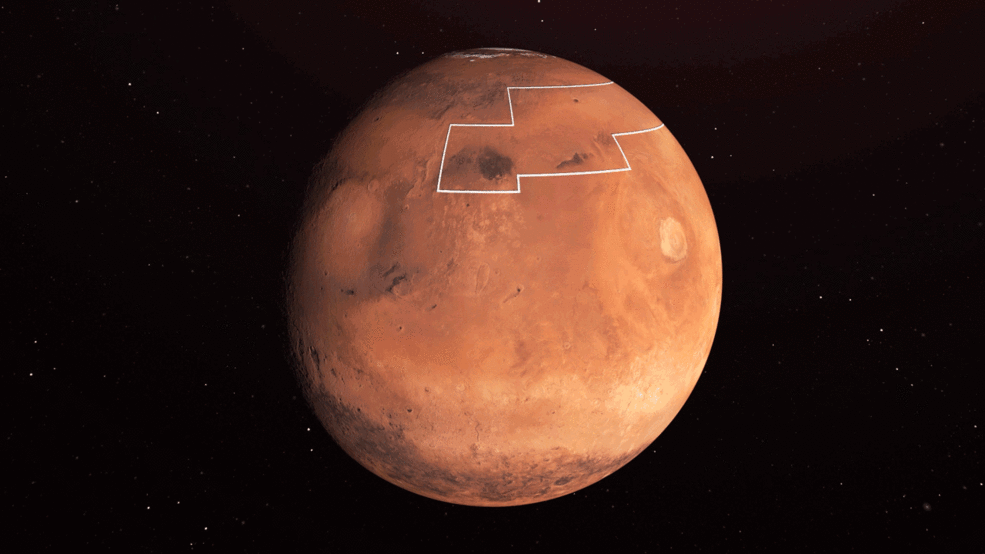Fox News Flash top headlines for Feb. 3
Fox News Flash top headlines for Feb. 3 are here. Check out what's clicking on Foxnews.com.
NASA has already found evidence of an oasis on Mars, but a new study notes that ancient waters on the Red Planet had the right conditions to support life.
The research, published in Nature Communications, suggests the water that once resided in the Gale Crater on Mars contained salt, had a mild pH level capable of supporting life and had a redox state (the measure of gases such as hydrogen or oxygen) reminiscent of a semiarid climate.
"Assuming that post-depositional sulfate-rich fluids interacted with the sediments, the redox disequilibria in secondary minerals suggest infiltration of oxidizing fluids into reducing sediments," researchers wrote in the study's abstract.

The annotated area in this illustration shows where water ice is located near the surface of Mars. (Credits: NASA/JPL-Caltech)
The Curiosity rover is exploring the Gale Crater, having celebrated its seventh anniversary on the Red Planet in August. Last month, it got stuck on Mars during a set of activities, but it has since begun operating normally.
The Gale Crater is believed to be between 3.5 and 3.8 billion years old and previous studies have looked at it to show the difference between the wet climate on ancient Mars and the desolate, arid climate it has today.
The Curiosity rover has made several remarkable discoveries, including finding "unusually high" levels of methane and a "shiny" object believed to be a meteorite.
NASA: ANCIENT MARS OASIS COULD HAVE SUPPORTED LIFE
NASA hopes the Curiosity rover, which "has a few more years before its nuclear power system degrades enough to significantly limit operations," can provide additional clues about the planet prior to the launch of the Mars 2020 rover mission.
In November, NASA announced that it has selected the location where its Mars 2020 rover will land on the Red Planet. The rover is expected to reach the Martian surface on Feb. 18, 2021. NASA’s long-term goal is to send a manned mission to Mars in the 2030s.

